Questions you may have
In what order should wines be served at the table?
When planning a meal, we often wonder about the order in which wines should be served at the table. When is the best time to taste a particular wine? There are a few basic guidelines, but the most important thing is to ensure that the tasting is consistent and enjoyable.
To avoid making mistakes, we recommend following these five rules:
- Organize the wine tasting by color: start with sparkling wines (such as Crémant d'Alsace or Champagne), white and/or rosé wines, then red wines
- Start with the lightest wines before moving on to the more powerful ones.
- Taste dry wines before sweet wines.
- From simpler wines to more complex wines.
- Young wines before older wines.
To find out more, read our article on the subject.
Which Alsace white wine goes well with raclette?
White wine is the best choice to accompany melted cheese. Choose a white wine that is not too dry, but with a nice freshness, such as Pinot Blanc Classic. The idea is that the wine should have enough roundness (i.e., voluptuousness) to complement the fattiness of the cheese. If the wine is too harsh, dry, or mineral, it will seem harsh alongside this well-rounded dish. Nevertheless, it is important that the wine retains enough freshness, and therefore a nice acidity, to "rinse" the palate, refresh it, and thus counterbalance the richness of the melted cheese.
What is an Appellation?
An appellation is an official French label issued by theINAO (Institut National des Appellations d'Origine), part of the Ministry of Agriculture. This labelidentifies a product whose manufacturing stages (production and processing) are carried out in the same geographical area and according to recognized expertise. There are several types of appellations: AOP ( Appellation d'Origine Protégée), AOC ( Appellation d'Origine Contrôlée), andIGP ( Indication Géographique Protégée).
What are the different appellations in Alsace?
There are three Appellations d'Origine Contrôlées (AOC) in Alsace: the Appellation Alsace or Vin d'Alsace for single-varietal white or red wines (Riesling, Sylvaner, Pinot Noir, etc.) and white wines made from a blend of several grape varieties (Gentil, Edelzwicker),the Appellation Alsace Grand Cru for classified terroir wines andthe Appellation Crémant d'Alsace for sparkling white and rosé wines.
What is a still wine?
A still wine is a wine that does not contain bubbles. It has not undergone a second fermentation in the bottle. It is the opposite of sparkling wine. Most wines are still wines.
What is sparkling wine?
A sparkling wine is a wine that releases bubbles of carbon dioxide on its surface. These bubbles are produced during a second fermentation in the bottle. Sparkling wines are contrasted with still wines.
What is the difference between Crémant d'Alsace and Champagne?
Synonymous with celebration, sparkling wines are often served as an aperitif with family or friends, or with dessert. Among the wide range of sparkling wines available internationally, two appellations coexist in France: Champagne and Crémant.
Several criteria differentiate them: the terroir, their geographical origin, the grape varieties used in their production, the production technique (traditional method vs. Champagne method) and, of course, the price!
To find out more, we invite you to read our article on the subject, which provides all the details: What is the difference between Crémant d'Alsace and Champagne?
What is an Appellation?
An appellation is an official French label issued by theINAO (Institut National des Appellations d'Origine), part of the Ministry of Agriculture. This labelidentifies a product whose manufacturing stages (production and processing) are carried out in the same geographical area and according to recognized expertise. There are several types of appellations: AOP ( Appellation d'Origine Protégée), AOC ( Appellation d'Origine Contrôlée), andIGP ( Indication Géographique Protégée).
How are Crémants d'Alsace made?
Crémant d'Alsace is a sparkling winewith Appellation d'Origine Contrôlée status produced throughout the Alsace wine region. It is mainly a single-varietal wine made from Pinot Blanc, but it can also be produced from Pinot Gris, Pinot Noir, Riesling, Auxerrois, or Chardonnay, with no restrictions on proportions. It is made usingthe "traditional method"(identical to that used for Champagne) with a second fermentation in the bottle. The rarer Crémant d'Alsace Rosé is made from 100% Pinot Noir.
How are white wines made?
The vinification of white wines involves several stages. Immediately after the white grapes are harvested during the grape harvest, the bunches are poured into a press to extract the juice and aromas from the fruit. This is followed by settling (or decanting) to separate the juice from the must, skin residues, stems, and seeds that are still present. The juice is then placed in vats for alcoholic fermentation, the stage during which the grape juice is transformed into wine. The wines can remain there for some time to gain maturity, a process known asaging. They are then bottled and may be aged on slats before being sold.
To learn more about white wine production, please see our article on the subject.
How are red/rosé wines made?
The vinification of red/rosé wines involves several stages. Immediately after harvesting the black grapes during the harvest, the bunches are poured into a press to extract the juice and aromas from the fruit. To give the wine its color, the juice and skins are left to macerate together for a few hours. This is followed by settling ( or decanting) to separate the juice from the must, skin residues, stems, and seeds that are still present. The juice is then placed in vats or barrels for alcoholic fermentation, the stage during which the grape juice is transformed into wine. The wines can remain there for some time to gain maturity, a process known asaging. They are then bottled and may be aged on slats before being sold.
Discover: Are you familiar with Rosé d'Alsace?
What are residual sugars?
Sugars are naturally present in grapes: every grape contains sugar. Logically, these sugars are therefore found in wine during vinification. These sugars are glucose and fructose.
During alcoholic fermentation, the sugars in the grapes are converted into alcohol by yeast. Residual sugars are therefore the sugars remaining in the wine after fermentation (when not all the sugar has been converted into alcohol).
All wines contain residual sugars in varying amounts. The level of sugars still present in the wine determines its profile and mouthfeel when tasted.
The level of residual sugar in wine determines whether it is dry, sweet, mellow, or syrupy.
What are sulfites used for in wine?
Sulfur dioxide (SO2) is a chemical compound in the sulfite family that can be found in many foods and beverages.
Sulfitescan be found in wine even when the label says "no added sulfites." This is because during alcoholic fermentation, the yeast in grapes always produces small amounts of sulfur. So, "no added sulfites" wines do contain sulfites, but they are naturally produced during fermentation.
Although the presence of sulfites in wine is the result of a natural process, it is also possible to add sulfites deliberately during production. They are used for their antioxidant and antiseptic properties.
The addition of sulfites is highly regulated. Numerous standards must be met, and a maximum dose depending on the type of wine must not be exceeded. It should be noted that wines produced using organic farming methods also contain added sulfites.
Where do the bubbles in Crémant come from?
Crémant d'Alsace, like any other wine, is made from grapes that are pressed and then stored under specific conditions to allow fermentation to take place, transforming the grapes into alcohol.
Once the wine has been bottled and a liqueur containing sugar and yeast has been added, the bottles are stored horizontally on racks in a cellar at a temperature of 11-12°C. The yeast introduced into the bottle breaks down the sugar, producing carbon dioxide ( CO2). This is the second fermentation in the bottle, known as the "prise de mousse" or "second fermentation." And this is when our famous bubbles appear!
To find out more, watch the video explanation by David Gsell in the Extra-Brut episode "Where do the bubbles in Crémant come from?"
What is a barrel used for?
A barrel is a wooden container used to store liquids for consumption.
Today, barrels are not used to transport wine, as they were in the past, but for aging wine in cellars after fermentation. This stage is called wine maturation. Before wine can be bottled and enjoyed, it must first age. This can be done in stainless steel vats or barrels for a certain period of time, depending on the type of wine the winemaker wishes to produce. Barrel maturation can be used for both white and red wines.
Aging wine in oak barrels leads to a typical evolution and aging of the wine. Wine aged in barrels will develop notes of vanilla, coconut, and fresh wood. But it will also develop roasted or smoky aromas, such as coffee, cocoa, or toast.
What are the different styles of Alsace wine?
Dry white wine is a wine with the lowest sugar content. The residual sugar does not exceed 4 grams per liter. These wines are very fresh and refined with excellent aging potential.
Red wine is naturally dry. In general, there is little or no residual sugar remaining after fermentation.
Semi-dry white wine is a wine with a sugar content of between 9 and 18 grams per liter. This medium sweetness is noticeable when the wine is young but will gradually fade with bottle aging.
Sweet wine is a wine with a residual sugar content of between 18 and 45 grams per liter. This sweetness is easily detected on the palate when tasting.
Sweet and syrupy white wines are wines with a sugar content exceeding 45 grams per liter. Sweet wines are most often produced from overripe grapes or from specific grape varieties and terroirs.
What is a dry white wine?
In Alsace, from an analytical point of view, a "dry" white wine is a wine that contains less than 4 grams of sugar per liter. However, the residual sugar content is not the only indicator to consider when determining whether a wine is "dry."
It is also essential to consider the alcohol content, acidity, and overall structure of the wine to better understand its style.
It is important to understand that the perception of a wine's sweetness is unique to each individual. For the same sugar content, a wine may seem very dry to you, while your neighbor may find it sweeter.
What are the Alsatian grape varieties?
In Alsace, seven grape varieties are mainly grown: Riesling, Pinot Blanc, Pinot Gris, Gewurztraminer, Muscat, and Sylvaner for white wines, and Pinot Noir for red and rosé wines. The wines are always presented in the famous slender bottle called a flûte d'Alsace and must be bottled in their region of production.
Which grape varieties are permitted for Grands Crus?
In order to qualify for the Grand Cru AOC designation, strict rules must be followed during the wine production process. Only four grape varieties are permitted in the Grand Cru appellations: Riesling, Muscat, Pinot Gris, and Gewurztraminer. There are a few exceptions regarding grape variety blends in Altenberg de Bergheim and Kaefferkopf, while Sylvaner is permitted in Zotzenberg.
How do you pronounce Gewurztraminer?
Gewurztraminer? Have you ever seen this word but never dared to pronounce it? We can help you!
If we break the word down phonetically by syllable, we get: GUÉ-VUR-Z-TRA-MI-NÈR
Go on! Have a go!
What are the dry white wines of Alsace?
In Alsace, four grape varieties are recognized for producing dry white wines: Riesling, Pinot Blanc, Sylvaner, and Muscat. Depending on the winemaking method and the winemaker's personal tastes, these grape varieties can produce sweeter wines. This is particularly true of Riesling in late harvests or certain Muscats, which can be rounder.
What is Riesling?
Riesling is the Rhine grape variety par excellence! It offers a wide variety of wines recognized as some of the best white wines in the world. It is also considered a wine for fine dining and can be kept in the bottle for decades.
Riesling is a very late-ripening grape variety, reaching maturity thanks to cool nights that give it all its special qualities. Wines made from this grape variety are beautiful, aromatic, racy, elegant, and powerful dry wines. Riesling reveals its subtleties through fruity, floral, or even mineral notes, depending on the soil in which it is planted.
What is Pinot Blanc?
Formerly known as Klevner in Alsatian (not to be confused with Klevener de Heiligenstein, made from the Savagnin Rose grape variety), Pinot Blanc is a generous Alsace wine with a beautiful personality. It is often blended with the less acidicAuxerrois, which adds roundness to this judicious blend.
Pinot Blanc d'Alsace is generally very pale in color with beautiful clarity. It is a fresh wine, rich without being exuberant, with aromas of peach, apricot, even citrus and a hint of white flowers. It reveals spicy notes on the palate and benefits from relative acidity. It is a white wine that is both tender and powerful, with a beautiful balance.
What is Pinot Gris?
Pinot Gris is a traditional grape variety with incredible aromatic richness. It is one of the four "noble grape varieties" of Alsace. Its finesse and distinction make it a great wine for gastronomy.
Pinot Gris is discreet yet offers great aromatic complexity. It develops typical smoky notes as well as delicious aromas of dried fruit, apricot, honey, and gingerbread. You will love its balance and freshness!
What is Pinot Noir?
Pinot Noir is the Alsatian grape variety that produces "Pinot Noir d'Alsace," the region's only red wine. It has a beautiful personality, both full-bodied and fruity. Its color can range from a deep, dark red to subtle garnet hues. The nose is characterized by aromas of black berries and fruits such as blackberry, blackcurrant, and cherry, sometimes surprising with notes of leather, vanilla, or prune.
On the palate, Alsace red wines express all the power of their terroir and beautifully enhance the fruity aromas of their nose. Balanced and long on the finish, these wines are structured by their ample, silky tannins.
What is Gewurztraminer?
Gewurztraminer is an aromatic variety of an old Alsace grape variety known as Traminer. Its name comes from the German word "gewurz," meaning "spicy."
Mainly grown on hillsides, Gewurztraminer is an early-ripening grape variety with low yields. It is classified as one of the "noble grape varieties" of Alsace wines, alongside Riesling, Pinot Gris and Muscat. It generally has a high alcohol content, sometimes reaching 14% vol. or more, combined with relatively low acidity.
One of the most aromatic white wines, it is very distinctive and produces superb, powerful, full-bodied wines, sometimes with hints of leather, smoke or licorice.
What is Muscat?
Three varieties are used to make Muscat d'Alsace. These are Muscat Blanc à Petits Grains, known as Muscat de Frontignan, Muscat Ottonel, and Muscat Rose à Petits Grains. Depending on the dominant variety, the wine can be quite lively or round. But in all cases, Muscat is a remarkably aromatic Alsace wine.
Its clear, fresh texture combined with pronounced grape notes make it a spontaneous and fragrant wine!
What is Sylvaner?
A typical dry wine from Alsace that is representative of its terroir, Sylvaner remains one of the emblematic grape varieties of the Alsace wine region. Remarkably fresh and light, with subtle fruitiness, Sylvaner also displays beautiful liveliness.
Sylvaner has an elegant pale yellow color and a distinctive, racy nose with vegetal and floral notes such as acacia and white flowers, and even hints of lemon, which promise beautiful freshness on the palate. Its lightness, balance, and pleasant presence on the palate are highly appreciated. Sylvaner has an aging potential of three years, sometimes more if it comes from noble plots.
What grape variety is used to make Crémant?
Most Crémants d'Alsace are made from grapes used to produce white wine. Crémant d'Alsace can be single-varietal, meaning it is made from a single grape variety. It can also be made from a harmonious blend of several varieties, each contributing to the subtle balance of the cuvée. The different white grape varieties that can be used to make this sparkling wine are Pinot Blanc, Riesling, Pinot Gris, and Chardonnay. Crémant d'Alsace can also be made from Pinot Noir, resulting in a sparkling rosé.
Which Alsatian grape varieties produce dry white wines?
In Alsace, the best-known dry wine is Riesling. Wines made from this grape variety are beautiful dry wines that are aromatic, distinguished, elegant, and powerful. Riesling reveals its subtleties through fruity, floral, or mineral notes, depending on the soil in which it is planted. You can find Rieslings in several of our ranges: the Chasseurs de Lune range, with winesthat bring out the typical characteristics of each grape variety; the Rayon de Lune range, with fruity wines selected by our cellar master; the Grands Crus, from the finest Alsatian terroirs; and finally , the Exception range.
Other Alsatian grape varieties produce dry wines. These include Pinot Blanc and Sylvaner.
What payment methods can be used?
Simple, fast, and secure. We have chosen a single online payment method by credit card, which is the simplest and most efficient. Payment for your purchases is made by credit card using the secure CM-CIC P@yement system. The card is debited immediately upon secure online payment.
Payment is only possible by credit card via the CM-CIC P@yement interface on the bestheim.com website.
If you are not comfortable with online payments, please contact our sales assistant on 03 89 49 08 63. She will guide you towards the most suitable solution for your purchases.
What security measures are in place for online payments?
The payment solution we have chosen, CM-CIC P@yement, allows you to make your purchases in complete security. When paying for your order online, you are automatically transferred to the bank's server via a secure SSL transaction (128-bit key session, in accordance with French government authorizations). Your card number is encrypted between your browser and the payment server. All information relating to your credit card is stored solely in the CM-CIC P@yement databases , and not in those of our cooperative, Bestheim. We do not receive, record or store any information relating to your bank details. Once your payment has been validated by CM-CIC P@yement, you will be automatically redirected to our website. Orders are only processed once payment has been validated, so no discounts or late payment penalties apply.
What are the exchange and return conditions?
In accordance with the provisions of Article L.121-21 of the French Consumer Code, you have a period of 14 days from receipt of your products to exercise your right of withdrawal without having to justify your reasons or pay any penalties, except for the return costs, which are entirely at the Customer's expense.
Returns may concern part or all of the order. They must be made in their original packaging, new, unopened, and in perfect condition. In this context, you are liable. Any damage to the product during this process may invalidate the right of withdrawal. Consequently, we advise you to keep the original packaging until the withdrawal period has expired and not to damage the packaging provided when opening the package.
Returns should be sent to the following address: BESTHEIM - Customer Service - 3, rue du Général de Gaulle - 68630 BENNWIHR.
If the right of withdrawal is exercised, Bestheim will refund the purchase price (including transport and delivery costs to the Customer) as soon as possible and no later than 14 days after the date of receipt of the products subject to the right of withdrawal at our premises or the date on which the consumer provided us with proof of shipment of these products. This refund will be made using the same means of payment as that used for the order.
You can find more information on this subject in our T&Cs.
Download our model withdrawal form here.
What are the delivery methods?
Our wines are delivered exclusively by carrier directly to the Customer at the delivery address specified during the ordering process. Depending on the volume of your order, we use different carrier partners who always ensure home delivery by appointment.
What are the delivery times?
Orders are delivered only by carrier directly to the Customer at the delivery address specified during the ordering process, within 10 business days of the order date.
However, this delivery time is provided for information purposes only and any delay shall not give rise to any compensation. In the event of a delay in shipment, you will be notified by email of any possible impact on the expected delivery time.
In accordance with legal provisions, in the event of a delay in delivery, you have the option of canceling the order by contacting us by phone at 03.89.49.08.63 or by email at ffreyburger@bestheim.com under the terms and conditions set out in Article L 138-2 of the French Consumer Code. If you receive the order in the meantime, we will refund it and the shipping costs in accordance with the terms of Article L 138-3 of the French Consumer Code.
In the event of delivery by a carrier, Bestheim cannot be held responsible for late delivery due exclusively to the unavailability of the Customer after several attempts to arrange a delivery date.
Once the order has been shipped, any change of delivery address must be requested from our services, confirmed in writing by the Customer, and will be subject to additional billing.
What are the shipping costs?
Shipping costs, including preparation and shipping fees, are €29.90 including tax for all orders of less than 24 bottles or less than €200 including tax. Shipping is free for orders of €200 or more including tax or 24 bottles or more.
How can I track my order?
You can track the status of your order in your customer account (in preparation, shipped, delivered).
When your order is shipped (from our premises) and handed over to our shipping partner, you will receive an email from the shipping company with a tracking link.
To which countries can I have my order delivered?
Orders placed on our Bestheim website are only delivered to mainland France.
How long should I keep my wine?
When you think of wines for aging, Alsace doesn't immediately spring to mind... and yet...
Although there is no limit to how long wine can be kept, it is not uncommon for certain vintages, even those over a hundred years old, to still show surprising youthfulness!
Ultimately, it's mainly a matter of personal taste. Some people like wines that develop aromas from long aging (known as tertiary aromas), while others prefer them when they are still fruity (primary and secondary aromas).
Generally speaking, wines from terroir will have a longer shelf life due to their substance and structure. For Crémants, it's a matter of taste. The patina of time on the effervescence can sometimes be surprising, but if you're looking for freshness and pronounced effervescence, it's best to consume your cuvée within two years of purchase.
In addition to its initial potential, the shelf life of a wine depends mainly on how it is stored. It is important to assess the quality of your cellar and regularly check the condition of the bottles you keep there. We discuss this in more detail in our article"Should you invest in a wine cellar?"
How should Crémant d'Alsace be served?
Crémant d'Alsace is a sparkling wine that should be served chilled (between 7° and 9°C) as an aperitif, during a meal or to celebrate dessert. To fully appreciate its aromas and delicate bubbles, serve it in flutes like Champagne. Avoid serving it in glasses that are too wide, as this will cause the bubbles to escape in record time. After tasting, if you have not finished the bottle, reseal it with a Crémant (or Champagne) stopper. You can then store it in the refrigerator for 48 to 72 hours.
How should wine be stored?
Have you just bought one or more fine bottles that you want to save for a special occasion? Here are a few tips for storing your wines perfectly.
To ensure your wines are stored properly, it is advisable to keep them in a wine cellar that meets several criteria:
1. A constant temperature of around 12°C.
2. Moderate humidity, which is essential for the proper aging of wine.
3. A dark cellar to avoid the "light taste" that dilutes the wine's aromas.
To find out more, listen to Emmanuel Vergely's explanations in the Extra-Brut episode "How to store your wines."
How long can you keep an opened bottle of wine?
Dry white wines do not keep for long, even when tightly sealed with a cork. When stored in the refrigerator, they should not be kept for more than 3-4 days. However, sweet or syrupy white wines can be kept for longer and can still be enjoyed within a month of opening.
Like dry white wines, red wines do not keep very long. Once opened, red wine can only be kept until the day after opening without being altered.
What about Crémant? With a good airtight closure, Crémant can be kept in the refrigerator for 48 to 72 hours, or even 1 to 2 days longer if more than half the bottle remains and it has not been reopened.
Read the full article, "How long can you keep an open bottle of wine?"
Which Alsace white wine goes well with raclette?
White wine is the best choice to accompany melted cheese. Choose a white wine that is not too dry, but with a nice freshness, such as Pinot Blanc Classic. The idea is that the wine should have enough roundness (i.e., voluptuousness) to complement the fattiness of the cheese. If the wine is too harsh, dry, or mineral, it will seem harsh alongside this well-rounded dish. Nevertheless, it is important that the wine retains enough freshness, and therefore a nice acidity, to "rinse" the palate, refresh it, and thus counterbalance the richness of the melted cheese.
Which Alsace wine should you serve with sauerkraut?
What could be better with Alsatian sauerkraut than a good white wine from the region? Choose dry, well-chilled white wines such as Riesling, Pinot Blanc or Sylvaner. The acidity of the cabbage and the wine will counterbalance the fattiness of the meat. The wine and food pairing will be most harmonious!
Which Alsace wine should you serve as an aperitif?
As an aperitif, you will be spoiled for choice among the wide range of Alsace wines, depending on what you plan to eat with your glass!
With small appetizers or warm puff pastries, go for Crémant d'Alsace.Its subtle acidity will leave your palate fresh for the rest of the meal. With fish, lumpfish roe, or salmon toast, Riesling is the perfect match. Fresh baby vegetables can be nibbled with a variety of sauces and a dry, light wine that whets the appetite: a Muscat d'Alsace. For more exotic, sweet and savory appetizers from Asia or Mexico, Gewurztraminer will delight your palate with its rich aromas and powerful, round character.
Which Alsace wine goes well with oysters?
With oysters, or any other shellfish or crustaceans, opt for a dry white wine such as Riesling or Pinot Blanc. The mineral notes of the wine will perfectly complement the iodine flavors of the dish. And for festive meals, don't hesitate to serve a Crémant d'Alsace, whose fine, sparkling bubbles will bring out the freshness and aromas of the dish!
What to eat with Gewurztraminer?
Gewurztraminer is a true chameleon, pairing well with a wide range of dishes! With its very round, floral, and spicy profile, Gewurztraminer is the perfect accompaniment to exotic recipes. Its assertive character comes into its own alongside strong cheeses such as Munster or Roquefort. Gewurztraminer from Alsace is the dessert wine par excellence. With its delicious roundness and inimitable fruitiness, it enchants chocolate cakes, tarts, and other fruit desserts. Try Gewurztraminer as an aperitif, served well chilled!
Which Alsace wine goes well with foie gras?
Whether goose or duck, Alsace wines pair perfectly with foie gras. You can accompany it with a sweet wine that is not too syrupy, such as a Pinot Gris Grand Cru, if served at the beginning of the meal. Gewurztraminer also goes very well with this exceptional dish. A little tip: if you serve it before dessert with a Vendange Tardive, your palate won't be overwhelmed at the start of the meal and you'll be able to fully enjoy this moment of tasting!
In what order should wines be served at the table?
When planning a meal, we often wonder about the order in which wines should be served at the table. When is the best time to taste a particular wine? There are a few basic guidelines, but the most important thing is to ensure that the tasting is consistent and enjoyable.
To avoid making mistakes, we recommend following these five rules:
1.Organize the wine tasting by color: start with sparkling wines (such as Crémant d'Alsace or Champagne), white and/or rosé wines, then red wines
2.Start with the lightest wines before moving on to the more powerful ones.
3.Taste dry wines before sweet wines.
4.From simplerwines to more complex wines.
5. Youngwines before older wines.
To find out more, read our article on the subject.
Which wine goes well with salmon?
With smoked salmon: serve a dry white wine, provided it is not too distinctive or rustic. The wine should be fresh, with a light, acidic structure. If it has fine bubbles, even better! Yes, dare to try a sparkling wine for a delicate pairing! Opt for a Crémant d'Alsace to combine finesse and pleasure!
With grilled salmon steak or salmon baked in foil: the cooked flesh of salmon is enhanced by dry but aromatic wines. Choose a white wine such as Riesling. This pairing brings out mineral notes, coupled with fruit aromas that perfectly highlight the delicacy of a salmon steak.
With raw salmon:raw or lightly marinated salmonis most often found in Asian cuisine in sushi, sashimi, or ceviche recipes. A dry, slightly spicy whitewine is a must: a Gewurztraminer will support the power of the wasabi while highlighting the fatty flesh of the salmon.
Which wine for dessert?
With cakes, cupcakes, or bredeles with hints of vanilla, lemon, or caramel, serve a glass of sparkling, fruity wine such as our ICE Concept cuvée made from Muscat grapes. A local wine is naturally the best accompaniment to traditional kougelhopf. Opt for an aromatic wine such as Gewurztraminer or even a more festive wine such as a good Crémant d'Alsace.
With tart or clafoutis, give way to the f i ne bubbles of Crémant d' r the sweetness of a Muscat or Gewurztraminer Vendanges Tardives to reveal all the flavors of the dessert!
For dark chocolate mousse or a dark chocolate dessert, we often think of port, but you can also pair it with a sweeter red wine from Alsace such as a Pinot Noir.
To accompany vanilla ice cream, opt for a sweet, rather "young"white wine such as a Vendange Tardive.
Discover all our wine and dessert pairing tips in the article "Which wine for dessert?"
What wine should you drink with a tartiflette?
A must-have dish during the winter season, tartiflette is one of the favorite dishes of all melted cheese lovers . This hearty dish is made with potatoes, onions, bacon, and Reblochon cheese from Savoie. It pairs perfectly with one of the Alsace wines from our region!
The richness and indulgence of this dish call for a lively white wine with good acidity. To counter the heaviness of the cheese and awaken your taste buds, serve a white wine with great freshness and lightness. Although cheese-based dishes generally pair better with dry white wines (this is the most obvious food and wine pairing), tartiflette can also be paired with red wines. The presence of bacon makes this pairing easier. In this case, choose a fresh, light red wine without too many tannins.
Discover Bestheim wines to pair with tartiflette by clicking here.
How to enjoy Zero Limit alcohol-free sparkling wine?
To enjoy Zero Limit Blanc and Rosé, which are perfect for any occasion, choose a flute glass for an unparalleled visual and taste experience. The bubbles are captured in its elegant shape, accentuating festive moments. Also explore the refreshing and innovative non-alcoholic cocktails inspired by Zero Limit sparkling wines for unique evenings.
At what temperature should you drink alcohol-free wine?
For the best tasting experience, be sure to serve Zero Limit well chilled, between 6 and 8°C. This temperature preserves all the nuances of flavor and delicate bubbles that characterize our sparkling non-alcoholic wines.
Is an sparkling wine without alcohol a Crémant d'Alsace?
No, an alcohol-free wine is not a Crémant d'Alsace. Crémants d'Alsace are traditional sparkling wines produced in the Alsace wine region of France. They undergo alcoholic fermentation, followed by a second fermentation in the bottle to obtain their fine bubbles. Alcohol-free wines, on the other hand, are beverages that have been de-alcoholized after fermentation, thus retaining the flavors of wine but without the alcohol.
Is alcohol-free wine environmentally friendly?
By choosing Zero Limit, our range of alcohol-free sparkling wines, you are making a gesture for the environment. Our alcohol-free wines are presented without caps or wire caps, the most difficult elements to recycle in the wine industry. So every time you enjoy Zero Limit, you are also taking a step towards more responsible consumption that respects our planet.
How is alcohol-free wine made?
Our Zero Limit alcohol-free wines are produced using a vacuum distillation method, a delicate process that gradually heats the wine to remove the alcohol without altering its distinctive aromas and flavors. Once the alcohol has evaporated, it is carefully separated from the rest of the wine, preserving all the quality and essence of our products.


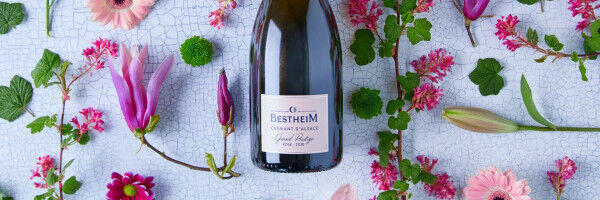
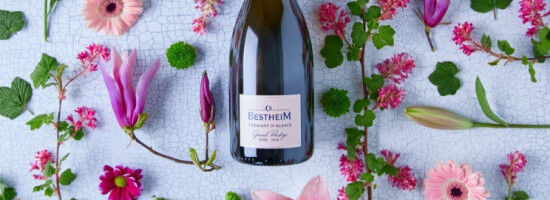

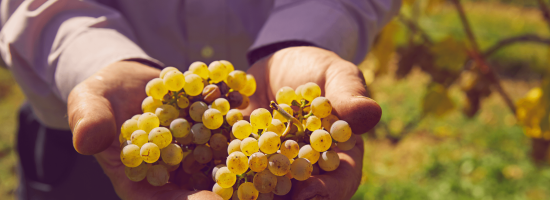
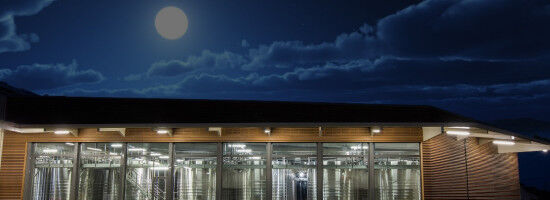
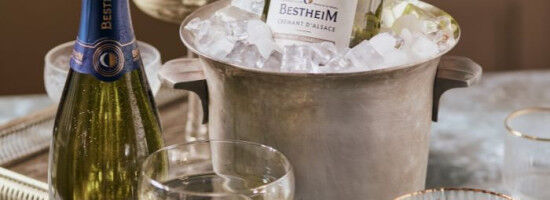
 English
English


